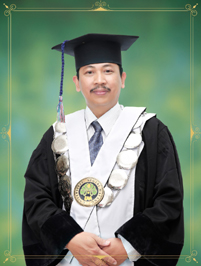Competency mapping based education and training program development model at the centre of teachers and education staffs development and empowerment in Malang, East Java, Indonesia
DOI:
https://doi.org/10.25255/jss.2016.5.3.252.262Palavras-chave:
Competency mapping, graded education and training, competency eligibility, competency software mappingResumo
This research was aimed at developing model of competency based education and training program by using program instruments and software for education and training services. This research employed the Borg and Gall Research and Development Method simplified by the Center of Policy Research and Innovation of The Indonesia Republic Department of Education. The research was conducted by following 5 (five) steps including initial research, initial product development, experts validation, small scale field trial, large scale field trial and product implementation. The objects of this research were leaders, staffs, and teachers. This research resulted 5 (five) products including the concept of model, guidelines of using instruments to design program tools for each level, guidelines of using tools for competency eligibility, competency mapping software, and manual of using competency mapping software.
The product workability was measured through the product usage level, the ease of product usage level, the level of product readability, the level of product completeness, the level of product effectiveness, and the product attraction using five scales category.Results of this research showed that these initial 4 (four) levels categorized as very high scoring 4.81 at the validation phase, scoring 4.62 at the small scale trial phase, and scoring 4.63 the large scale trial phase, and 4.85 at the implementation phase. The product attraction level also reached very high scoring 4.86 and the satisfaction level in the implementation of the product was also very high scoring 4.60 . The software was successfully used to input 4230 vocational teachers data base. This research concluded that the product can be used by the center of Center of Automotive and Electronic Teachers and education Staffs Development, Malang, East Java, Indonesia to (1) design graded and continuous education and training program, (2) design competency assessment instruments for the quality assurance, and (3) to conduct need analysis using competency mapping software.
Downloads
Referências
Depdiknas. (2008).Metode Penelitian Pengembangan. Pusat Penelitian Kebijakan dan Inovasi Pendidikan. Jakarta: Badan Penelitian dan Pengembangan Departemen Pendidikan Nasional.
Gall, M.D; Gall, J.P, & Borg, W.R. (2003). Educational Research: AnIntroduction. New York: Longman.
Harold A. Liston. (1975). The Delphi Method. Edited with Murray Turoff. Addison-Wesley.
Laird, Dugan. (1985). Approaches to Training and Development. Addison-Wesley Publising Company.
Merten, Donna M.(2010). Research and Evaluation in Education and Psychology: Integrating Diversity wit quantitative, qualitative, and Mixed Methods. Thousand Oaks, California.
Nadler, L. (1982). Designing Training Program: The Critical Events Model. Readming., Massachusetts: Addison- Wesley Publishing Company.
Peraturan Pemerintah nomor 101 tahun 2000. Tentang Pendidikan dan Pelatihan Pegawai Negeri Sipil .Jakarta, Depdiknas.
Pont, A.M. (1991). Developing Effektive Training skills. In Roger Bennet (Ed).London: McGraw-Hill Boo Company.
Sonhadji, K.H, H.A. (2001). Manajemen Pendidikan dan Pelatihan. Malang: Universitas Negeri Malang
Sugiono. (2009). Metode Penelitian Pendidikan Pendekatan Kualitatif, Kuantitatif dan R&D). Bandung: Alfabeta
Supriyono.(2015).Profesionalisasi Guru Bahasa Inggris Sekolah Yayasan Pendidikan Jayawijaya Menuju Sekolah Bertaraf Internasional:Sebuah Analisis Reflektif.KONSTRUKTIVISME.Vol 7, No. 1 Januari 2015, http://www.Jurnal-konstruktivisme.info//, http://konstruktivisme.unisba bli tar.ejournal.web.id//
Supriyono.(2016).G*GOLD Approach to Character education.KONSTRUK-TIVISME.Vol 8, No. 1 Januari 2016, http://www.Jurnal-konstruktivisme.info//, http://konstruktivisme.unisbablitar.ejournal.web.id//
Tessmer, Martin. (1998). Planning and Conducting Formative Evaluations.
Philadelphia: Kogan Page.
Torrinton, D.,& Huat, T.C. (1994). Human Resource Management for Southeatst Asia. Singapura: Prentice Hall.
Undang-Undang Nomor 20 tahun 2003. Tentang Sistem Pendidikan Nasional 2003. Jakarta, Depdiknas.
Van den Akker J., (2006). Educational Design Research. London and NewYork: Routledge.











 a Creative Commons Attribution 4.0 International License.
a Creative Commons Attribution 4.0 International License.

